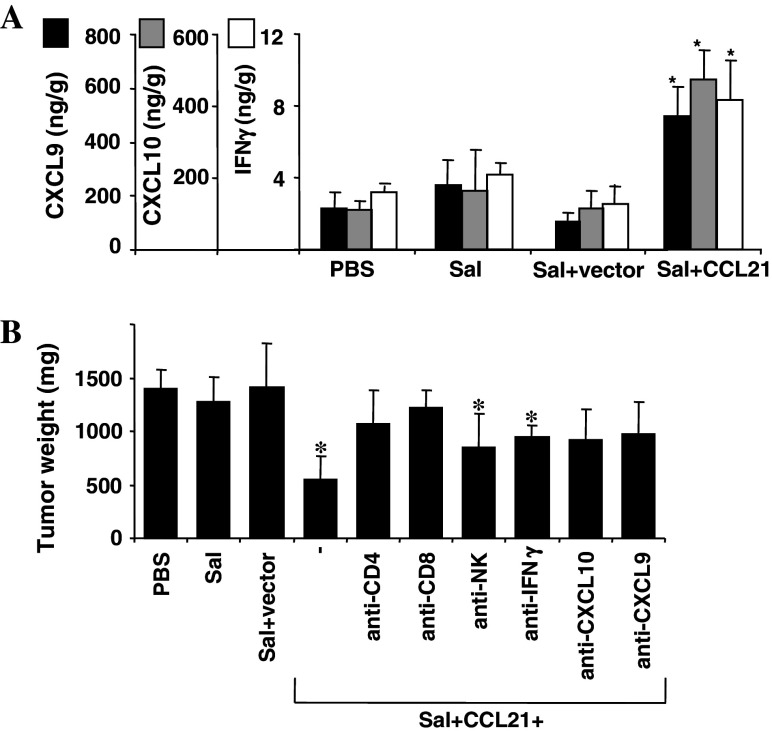Fig. 3.
Analysis of mechanism of anti-tumor activity of CCL21-expressing S. typhimurium. a Portion of tumors from sacrificed mice (n = 3) was extracted using a 1% NP-40 solution in PBS, and analyzed by ELISA (eBioscience, San Diego, CA, USA) for the CXCL9 (dark filled square) and CXCL10 (dark filled square) chemokines as well as IFNγ (open square). Data represent ng cytokine per gram of total protein (mean ± SD). b C57/Bl6 mice (n = 5) were challenged SC with 1.25 × 105 B16 melanoma cells (from ATCC; Manassas, VA, USA). After 7 days, mice were injected IV with PBS, or 5 × 106 CFU of S. typhimurium (Sal), S. typhimurium containing empty vector (Sal + vector) or S. typhimurium bearing CCL21 vector (Sal + CCL21), including groups of mice that were treated IP with (500 μg/mouse) antibodies against CD4+ T cells (Sal + CCL21 + anti-CD4; anti-CD4 clone GK1.5, ATCC; Manassas, VA, USA), CD8+ T cells (Sal + CCL21 + anti-CD8; anti-CD8 clone 2.43, ATCC; Manassas, VA, USA), NK cells (Sal + CCL21 + anti-NK; anti-asialo-GM, Wako Chemical, Dallas, TX), or (100 μg/mouse) antibodies against IFNγ (Sal + CCL21 + anti-IFN γ; ATCC; Manassas, VA, USA), CXCL10 (Sal + CCL21 + anti-CXCL10; gift from Dr Valbuena), or CXCL9 (Sal + CCL21 + anti-CXCL9; gift from Dr Valbuena) after 5 and 15 days. Depicted are the tumor weights (mean ± SD) after 22 days. Asterisks indicate P < 0.05 compared to mice treated with PBS, Salmonella, or Salmonella + vector. Results are representative of three independent experiments

